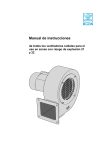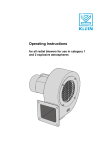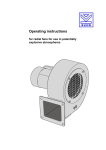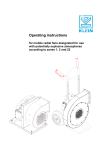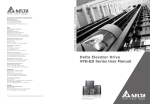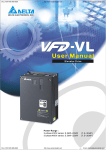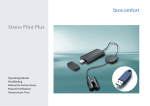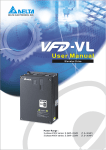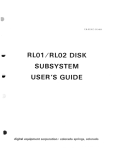Download Operating Instructions - Karl Klein Ventilatorenbau GmbH
Transcript
Operating Instructions For all radial blowers for use in category 1 and 2, 21 and 22 explosive atmospheres 01 1_ L0 K 1_ 00 Operating manual for radial blowers for areas subject to gas and dust explosion hazards Printed in Germany We reserve the right to change the information and illustrations shown in this operating manual made as a result of technical advancements. The reprint, translation and reproduction of any kind, including excerpts, require the manufacturer's written approval. This operating manual is not subject to update services. You may inquire with the manufacturer for the most current revision. KARL KLEIN Ventilatorenbau GmbH Waldstraße 24D-73773 Aichwald Phone.: +49 7 11 - 36 90 6-0 Fax.: +49 7 11 - 36 90 6-50 Internet: www.karl-klein.de e-mail: [email protected] Revision: 04/2014 04/2014 KARL KLEIN Ventilatorenbau GmbH Page 1 Operating manual for radial blowers for areas subject to gas and dust explosion hazards Table of Contents Table of Contents 1 1.1 1.2 1.3 1.4 Preliminary remarks ......................................................................................................... 4 Manufacturer's instructions to the operating entity ............................................................. 4 Operating entity obligations for blowers located in explosive atmospheres ....................... 4 Symbols used ..................................................................................................................... 6 Type plates and instruction labels ...................................................................................... 7 2 2.1 2.2 Designated use ................................................................................................................. 8 Limitations to the use and special considerations for designated uses ............................. 8 Non-designated uses .......................................................................................................... 8 3 3.1 3.2. 3.1.1 3.1.2 3.1.3 3.2 Safety ................................................................................................................................. 9 Basic safety instructions ..................................................................................................... 9 Emissions.......................................................................................................................... 10 Dust..................................................................................................................................... 10 Noise ................................................................................................................................... 10 Vibrations ............................................................................................................................ 10 Overheating protection ....................................................................................................... 10 4 Transportation and storage ............................................................................................. 11 5 Description ........................................................................................................................ 12 6 6.1 6.2 6.3 6.4 Assembly/installation ....................................................................................................... 13 General safety instructions for assembly and operation .................................................... 13 Hook-up/ installation ........................................................................................................... 14 Assembly and installation specifications for explosive areas. ............................................ 14 Blower mounting ................................................................................................................. 15 7 7.1 7.2 7.3 Maintenance, care and repair instructions .................................................................... 16 Maintenance and care ........................................................................................................ 16 Inspect and exchange bearings .......................................................................................... 16 Repair instructions and procedures .................................................................................... 16 8 8.1 Additional steps to be taken when deploying blowers in zone 21 .............................. 17 Vibration threshold values .................................................................................................. 17 9 Disposal ............................................................................................................................. 17 04/2014 KARL KLEIN Ventilatorenbau GmbH Page 2 Operating manual for radial blowers for areas subject to gas and dust explosion hazards Comply with safety instructions! Please read all safety instructions contained in this operating manual with care. Familiarize yourself with the operation of the blower before placing it into service. It will be too late to do so when doing the work! Never permit someone without the proper technical knowledge to install and operate this blower. Applicability This operating manual applies to all blowers with the following model designations: ENG … II 3 GD c (IIB or IIC) T125°C; DNG … II 3 GD c (IIB or IIC) T125°C; EMV … II 3 GD c (IIB or IIC) T125°C; DMV … II 3 GD c (IIB or IIC) T125°C; EMVL … II 3 GD c (IIB or IIC) T125°C; DMVL … II 3 GD c (IIB or IIC) T125°C; DSV2 … II (2 or 3) GD c (IIB or IIC) T4/T135°C; DSV 4 … II (2 oder 3) GD c (IIB or IIC) T4/T135°C; DHV … II (2 or 3) GD c ( IIB or IIC) T4/T135°C. Purpose of the operating manual This operating manual accompanies the equipment. It also contains the installation instructions. The operating manual was prepared by the manufacturer on the basis of their knowledge and experience with design, production and operating procedures. The operating entity may supplement this manual with special instructions (for instance for supervisory and reporting duties, operating specific maintenance and care schedules), in particular to establish special cleaning intervals to remove dust deposits on the motors. Symbols used in this operating manual The graphic representations and drawings are basic illustrations of a blower. They are not to scale and do not correspond to the proportions of all blowers in the product range. These illustrations are only intended as a guide. Detailed dimensions and views are shown in the catalog. Copyright The copyright for this operating manual remains with KARL KLEIN Ventilatorenbau GmbH. This operating manual may not be reproduced in whole or in part without prior approval by KARL KLEIN Ventilatorenbau GmbH. 04/2014 KARL KLEIN Ventilatorenbau GmbH Page 3 Operating manual for radial blowers for areas subject to gas and dust explosion hazards 1 Preliminary remarks Preliminary remarks 1 1.1 Manufacturer's instructions to the operating entity As the operating entity, you are responsible for: 1.2 the correct technical and designated use of the blower by trained personnel, compliance with safety regulations and safety instructions and any occupational safety and accident prevention measures, the technical training of the operating personnel on the equipment, and for their awareness of the operating manual. preventing hazardous dust deposits and/or the timely cleaning of the motor surfaces. Operating entity obligations for blowers located in explosive atmospheres The Operational Safety Directive [BetrSichV or equivalent other national regulations] and the 11th Directive to the Machinery and Product Safety Act [11th GPSGV] require the operating entity to make a variety of provisions for the use of machinery in explosive atmospheres. Pursuant to §3 of the Operational Safety Directive [BetrSichV or equivalent other national regulations], the operating entity is required to conduct a hazard assessment of the area where the machinery is to be used. This assessment is intended to recognize and to take into consideration hazards that may arise when using the machinery in combination with the production materials and the environment. Pursuant to §4 Operational Safety Directive [BetrSichV or equivalent other national regulations], the operating entity is responsible for taking any required steps and for selecting the equipment that is suited for the conditions at the deployment location and that will ensure safety and health protection if used as designated. To do so, the operating entity may refer to our KLEIN catalog, which contains detailed technical specifications and notes regarding uses. When conducting the hazard assessment and selecting a suitable machine, the operating entity must apply directive 2006/42/EC/ of the European Parliament and the Operational Safety Commission and directive 94/9 EC, dated 23 March 1994 (also known as the ATEX directive) and the applicable harmonized standards (EN), for instance EN 14986, Designs for blowers for the use in explosive atmospheres or EN 1127-1, Explosive Atmospheres. the operating entity is solely responsible select the equipment (blower) suitable for the intended area and the intended location. Repair and/or service work on explosion protected blowers may only be performed by the manufacturer or by a repair shop authorized to do so. After the work on the blowers is completed, the dust explosion protection must have been returned to operational status. 04/2014 KARL KLEIN Ventilatorenbau GmbH Page 4 Operating manual for radial blowers for areas subject to gas and dust explosion hazards 1 Preliminary remarks Product Warranty KARL KLEIN Ventilatorenbau GmbH provides a product warranty as part of its general terms and conditions of sale and delivery. The warranty is rendered null and void if the installation and operating procedures described in this operating manual, in particular the designated uses, are not complied with. Any unauthorized reconfiguration or modification of the blower is prohibited. Only use replacement parts and accessories that were approved by KARL KLEIN Ventilatorenbau GmbH. The use of other parts may impair the function. The operating entity is liable for any resulting damages. KARL KLEIN Ventilatorenbau GmbH does not assume liability or honor warranty claims for damages resulting from customer performed repairs or an incorrect blower installation. 04/2014 KARL KLEIN Ventilatorenbau GmbH Page 5 Operating manual for radial blowers for areas subject to gas and dust explosion hazards 1 Preliminary remarks 1.3 Symbols used This operating manual uses the following symbols. These are complementary to safety and damage prevention instructions. Attention Electrical Power Shock! Designates potentially occurring hazardous situations. Not observing these warning labels can result in death, serious injuries or property damage. Attention! Designates a potentially occurring hazardous situation. Not observing these labels can result in injuries or property damage. Instruction! Application instructions for the optimum use of the equipment and other useful information. 04/2014 KARL KLEIN Ventilatorenbau GmbH Page 6 Operating manual for radial blowers for areas subject to gas and dust explosion hazards 1 Preliminary remarks 1.4 Type plates and instruction labels Instruction! The specifications on the type plate are important for the designated use. All labels and plates must be legible at all times. Illegible or lost type plates and warning labels must be replaced immediately. G The information on the type plates identifies the respectively desired blower type and rating. The information on the type plate corresponds to the performance ratings that were ordered. These may be subject to change. Instruction! The values shown on the type plate take precedence. Other performance ratings are found in the order confirmation 04/2014 KARL KLEIN Ventilatorenbau GmbH Page 7 Operating manual for radial blowers for areas subject to gas and dust explosion hazards 2 Designated Use Designated use 2 Instruction! For instance, the blower may be labeled as II 2 GD c IIB T4 Equipment class II; Category 2; D = Dust; G = Gas; c = design safety IIB = explosion subgroup according CENELEC / IEC / NEC 505 T3 = up to 200 °C surface temperature T4 = up to 135 °C surface temperature The blower can be used in atmospheres subject to dust and gas-explosion hazards for zones 1 and 2, 21 and 22 (in accordance with RL 94/9 EC and Operational Safety Directive [BetrSichV or equivalent other national regulations]). In reference to EN 1127-1, this means for Zone 1 that the blower is intended for use in those areas where an atmosphere capable of producing an explosion, in the form a mixture of combustible gas, vapor or mist with air, may occasionally form under normal operating conditions. In reference to EN 1127-1, this means for Zone 2 that under normal operating conditions, an atmosphere capable of producing an explosion, in the form a mixture of combustible gas, vapor or mist with air, normally does not form or only forms for brief periods. In reference to EN 1127-1, this means for Zone 21 that the blower is intended for use in those areas where an atmosphere capable of producing an explosion, in the form of a combustible dust-cloud mixed with air may occasionally form under normal operating conditions. In reference to EN 1127-1, this means for Zone 22 that under normal operating conditions, an atmosphere capable of producing an explosion, in the form of a combustible dust-cloud mixed with air, normally does not form or only forms for brief periods. The designated use encompasses observing and complying with the specifications and instructions in this operating manual. 2.1 Limitations to the use and special considerations for designated uses The designated operation also includes: 2.2 The conveyed medium may not contain solid or liquid contaminants. Use a filter as needed (see KLEIN list of accessories). When conveying aggressive media, the blower corrosion protection mechanisms must first be adapted to the material characteristics. (Consult the manufacturer). If the blower is to be used in an open blowing configuration, or if it is likely that a hazard exists for the downstream machine or installation if the blower wheel breaks, a protective screen must be mounted to the blower exhaust opening. The blower may only be operated in an installed condition, i.e. mounted to or into systems and machines. The temperature of the entering conveyed medium may not exceed +60 °C. The ambient temperature may not be below – 20 °C or exceed + 40 °C. The blower may only be operated with an installed intake protective screen. Non-designated uses Non-designated and hazardous uses specifically include conveying of explosive or combustible media in zone 20 and zone 0; the blower may only be used in zones 1, 21 and 2, 22 with a corresponding marking on the type plate; conveying abrasive media; conveying without a suitable intake protective screen; 04/2014 KARL KLEIN Ventilatorenbau GmbH Page 8 Operating manual for radial blowers for areas subject to gas and dust explosion hazards 3 Safety Safety 3 3.1 operation without a motor cut-off switch; use in underground mining operations; any other use that deviates from the designated uses, and which will result in a hazardous condition. Basic safety instructions Klein blowers are designed and produced in accordance with generally accepted technology, occupational and accident prevention practices and in accordance with the requirements of the directive 94/9/EC for machines and protective systems for the designated use in explosive environments, as well as the requirements of the Machine and Product Safety Act [GPSG or equivalent other national regulations]. They correspond to the state of the art. Nevertheless, blowers in operation can be the source of hazardous conditions, especially when hazardous conditions are created as a result of inappropriate use or non-designated use . For this reason, all instructions for the use of the blower must be adhered to. Instruction! The blower may only be placed into operation when in impeccable overall condition, only with an undamaged housing and impeller wheel, and only with a fully operational, safe electrical hook-up. Operating a defective machine is a danger to life and limb. Easily ingested materials, such Styrofoam, fabric rags, or similar may not be located in the vicinity of the intake. Care must be taken that sufficient clearance is provided to the intake. Take note of the air exhaust direction and area. The fragments from an impeller wheel failure must be prevented from damaging the downstream equipment to be cooled. The electrical installation must correspond to the requirements of the machine into which the blowers are to be installed (i.e. motor cut-off switch). The personnel must be familiar with all steps described in this operating manual that relate to the proper operation and use of this equipment. In areas with dust build-up and dust load in the environment; the dust deposits must be held low enough to prevent the dust smoldering temperature from being reached; Explosion-protected blowers may not be repaired by the customer. To maintain the explosion protection, blowers may only be repaired or maintained for preventive purposes by the manufacturer. To avoid combustion hazards from dust deposits, cleaning intervals must be rigorously complied with. The cleaning operation must be performed with diligence. The dust buildup must not exceed a thickness of 5mm. 04/2014 KARL KLEIN Ventilatorenbau GmbH Page 9 Operating manual for radial blowers for areas subject to gas and dust explosion hazards 3 Safety 3.2. Emissions 3.1.1 Dust The incidence of hazardous emissions is dependent on the various media to be conveyed 3.1.2 Noise The noise profile depends on the installation type, on the environmental conditions and the respective operating load on the blower. The operating noise levels of the blower can reach high levels for certain installation types and usages. The values can range from 60 to 110 dB (A). Detailed acoustic pressure levels can be found in the KLEIN catalog. If work must be performed in the vicinity, appropriate noise protection steps must be taken by the operating entity as part of its duties in accordance with the Operational Safety Directive [BetrSichV or equivalent other national regulations], for instance hearing protection. 3.1.3 Vibrations KLEIN blowers are designed to such a high balance quality grade that no dangerous vibrations will occur. The vibrations resulting from the unavoidable residual imbalance can be reduced by installing the equipment with vibration dampers, thus preventing the vibration from being transferred to other components. External vibrations or impacts must be prevented from being transferred to the blower. The blower must not be exposed to dynamic forces. 3.2 Overheating protection To avoid potential overheating, the operating entity can request a thermal winding protector when placing the order. Under all circumstances, the operating entity must avoid excessive dust buildup on the surface by timely cleaning. The dust buildup must not exceed a thickness of 5mm. 04/2014 KARL KLEIN Ventilatorenbau GmbH Page 10 Operating manual for radial blowers for areas subject to gas and dust explosion hazards 4 Transportation and Storage 4 Transportation and storage Instruction! To transport and install the equipment safely, a suitable lifting strap should be used. The blower should be secured in such a way that balance is maintained. Only transport the equipment with suitable rigging and lifting implements. Prevent the blower from tipping. The lifting eyes on the blower housing are not intended as the sole means of lifting the entire blower. The motor must always be secured separately! Attention! During transport, body parts are subject to a crushing hazard between the blower and the surroundings. Instruction! Dispose of packaging materials properly. Do not burn them. Storage instructions! Before transporting the blower to the installation site, the equipment should only be stored in enclosed, dry areas. Storage in open spaces that are protected by roofing is permitted for only short periods. The blower must be protected against damaging environmental influences and mechanical damage. 04/2014 KARL KLEIN Ventilatorenbau GmbH Page 11 Operating manual for radial blowers for areas subject to gas and dust explosion hazards 5 Description 5 Description Standard configuration KLEIN blowers are radial blowers with a ball-bearing mounted electrical drive. The respective medium is ingested axially and exhausted radially in the desired direction (see illustration). 01 1_ L0 K 3_ 00 Flow direction of the medium 04/2014 KARL KLEIN Ventilatorenbau GmbH Page 12 Operating manual for radial blowers for areas subject to gas and dust explosion hazards 6 Assembly/installation Assembly/installation 6 6.1 General safety instructions for assembly and operation Warning! Life threatening electrical shock hazard! A life threatening electrical shock hazard exists if the blower cable ends are connected without first disconnecting the electrical power. Always disconnect power prior to working on components that are electrically energized. Correspondingly, the electrical hook-up may only be performed by a qualified and trained electrician who is trained in installation procedures in explosive environments. Trained electricians are persons who are familiar with the assembly, installation, initial startup and operation of the equipment/machine and possess an appropriate qualification, or who are familiar with safety technology standards in the maintenance and use of appropriate protective gear and accident prevention procedures as a result of a corresponding education or training. The installation depends on the requirements placed on the blower and the function specific conditions at the installation location (on the machine or the equipment). Only use spark-free tools when performing assembly and installation work in explosive environments. 04/2014 KARL KLEIN Ventilatorenbau GmbH Page 13 Operating manual for radial blowers for areas subject to gas and dust explosion hazards 6 Assembly/installation 6.2 Hook-up/ installation Instruction! The terminal assignments on the terminal block can be found in the terminal box. It is mandatory to comply with the circuit diagram! A correct hook-up ensures trouble-free operation. Instruction! Connecting and control cables must be installed to EMV standards in accordance with operating requirements and the respective local regulations. 6.3 Assembly and installation specifications for explosive areas. Additional mandatory requirements: Instruction! The blower may only be mounted at one location! Either at the exhaust flange, the blower base and/or motor console or at the intake mounting flange. Instruction! The operating entity must install a suitable motor cut-off switch. The minimum specifications for this (nominal current and te period) is shown on the type plate. Attention! During installation, body parts are subject to a crushing hazard between the blower and the surroundings. If the blower is operated with an open intake, the surrounding area must be free of ingestible objects. Minimum distance between a wall and the cooling-blower enclosure is 20 mm The motor breaker or motor cut-off switch must correspond to the nominal motor rating shown on the motor specification (type plate). 04/2014 KARL KLEIN Ventilatorenbau GmbH Page 14 Operating manual for radial blowers for areas subject to gas and dust explosion hazards 6 Assembly/installation 6.4 Blower mounting Attention! Potential for damage to the equipment! A double sided mounting must be avoided. This can result in damage and failure of blower components. Decouple the structure bound sound by installing a canvas expansion sleeve. The blower may only be mounted using one location! Either at the exhaust flange, the blower base and/or motor console or at the intake mounting flange. Installation examples: 01 01_ _KL 004 At the exhaust flange at the motor console 005_KL01_01 At the intake mounting flange for wall installation 04/2014 KARL KLEIN Ventilatorenbau GmbH Page 15 Operating manual for radial blowers for areas subject to gas and dust explosion hazards 7 Maintenance, care and repair instructions Maintenance, care and repair instructions 7 Instruction! Depending on the intended use of the blower and the respective system concept, the operating entity may consider additional cleaning and/or maintenance intervals. Unauthorized repair of damage or exchange of components are hazardous. This renders the explosion protection features ineffective. 7.1 7.2 7.3 Maintenance and care When using condensation water drainage holes, or when the equipment is deployed in locations with dew buildup, causing condensation water to collect in the motor's interior, the collected condensation water must be drained in regular intervals via the condensation water drainage opening at the lowest point of the bearing enclosure; the drainage opening must be subsequently resealed. The dust buildup on the equipment surface must not exceed a thickness of 5mm. The blower wheel must be regularly inspected for contamination and cleaned to identify imbalances of the blower wheel early, and to prevent imbalances. Inspect and exchange bearings Inspect the unimpeded operation of bearings in regular intervals by monitoring the operating noises; replace as needed. The ball bearings must be replaced by the manufacturer or an authorized repair shop after no more than 18,000 operating hours or 3 years. Repair instructions and procedures Do not perform customer repairs on defective, damaged or unevenly running blowers, but send the equipment to the manufacturer for repair. The manufacturer will ensure that repairs are performed properly and that the equipment is properly balanced. Only qualified and trained personnel should perform the disassembly of the blower. Attention! Potential for damage to the equipment! When balancing weight clips (1) are relocated or removed from the blower fins, an imbalance results. 1 Never perform repairs on the blower on your own. If the assembly is not performed properly, any subsequent use may create an explosion hazard. 006_KL01_01 04/2014 KARL KLEIN Ventilatorenbau GmbH Page 16 Operating manual for radial blowers for areas subject to gas and dust explosion hazards 7 Maintenance, care and repair instructions 8 Additional steps to be taken when deploying blowers in zone 21 Instruction! Pursuant to DIN EC 14986, a permanent vibration monitoring system that is mounted directly to the blower has been mandatory since May 2007 on blowers operating in zone 21. Blowers can be procured from Karl Klein with the corresponding devices installed. In this case, the customer will be provided with an installed vibration sensor and an optional, separate monitoring device. The monitoring device must be installed outside of the explosive area. Please refer to the corresponding operating manuals. When implementing a customer designed solution, the following issues need to be taken into consideration: 8.1 Only vibration sensors that are certified for zone 21 may be used. The vibration sensor should preferably be installed on the A-side bearing enclosure of the drive motor, in a horizontal orientation to the installation orientation. The nominal sensor signal must be transmitted to a control or monitoring device that is located outside of the explosive area. The control must shut the blower down if the blower reaches critical vibration levels. Vibration threshold values Threshold values in accordance with ISO 14694 Rigid mount mm/s Flexible mount mm/s Starting value 4.5 6.3 Alarm threshold 7.1 11.8 Cut-off value 9.0 12.5 The values apply to blowers in industrial settings. 9 Disposal Reusing defective blowers and/or their components, such as the blower impeller wheels, roller bearings, etc. can result in property damage and personal injury, as well as damage to the environment. All blower components must be properly disposed of in compliance with the national and international laws and regulations. 04/2014 KARL KLEIN Ventilatorenbau GmbH Page 17


















